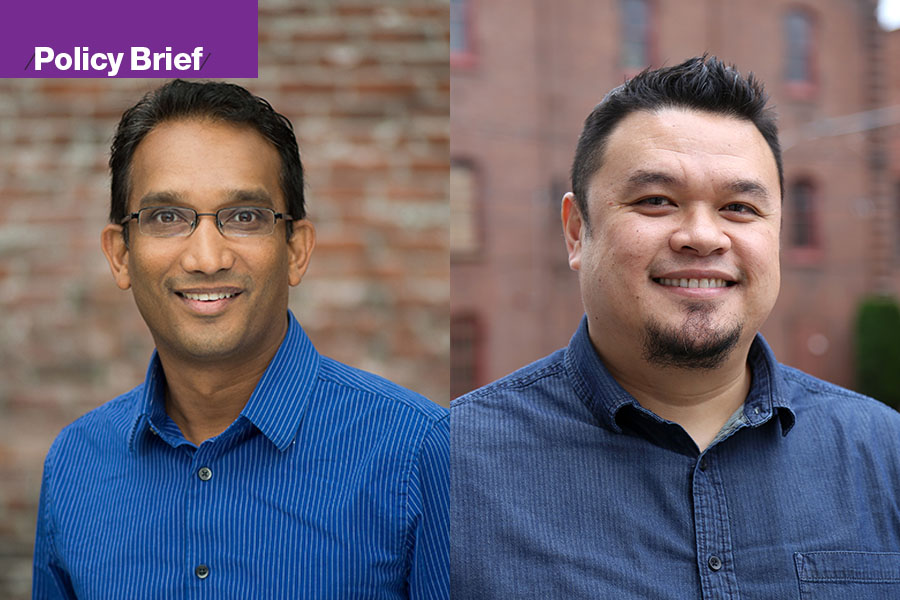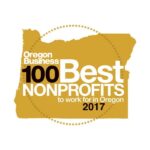Ruwan Jayaweera, PE, and Ed Herrera, AIA write about the case for continued focus on diversity and inclusion.
Here’s the bad news: The diversity of Oregon’s architectural and engineering industry is sorely lacking. A sampling done by Room for More of some of Portland’s architectural and engineering firms shows that most firms are between 80% and 85% white. If you consider management staff only, that percentage jumps up to a staggering 85% to 95%. A glance at the 2022 Census data for Portland shows an increase in diversity in the city’s population, with the white, non-Hispanic population at 69%.
Why does this matter? Because design and build projects that reflect the monocultural perspectives of their participants are more likely to fail to serve underrepresented constituents. Perhaps this isn’t a fatal problem when a firm is commissioned to build a house for a successful young couple. But it can matter a lot if the firm is commissioned to build a school or a housing project or a community center. More inclusive firms produce more inclusive designs.
Now the good news: Most firms in Portland are trying. Many firms have committees or initiatives to increase diversity, and having diverse voices at the decision-making table has resulted in innovative business decisions and interesting project designs.
A signature Portland event, Sustainable Building Week, this year focused on this issue. In presentations, panel discussions and showcases, architects, engineers, contractors and consultants highlighted the ways firms and individuals are working to include a broader-than-traditional set of perspectives. One of the ways this happens is through cross-disciplinary support groups, such as Room for More, where professionals share stories, advice and actions intended to include and reach traditionally underrepresented groups, such as people of color and women.
PAE, the engineering firm, has embraced the work of its Justice, Equity, Diversity, and Inclusion and the Women in Leadership committees. The JEDI Committee has been able to pass important initiatives such as adding pronouns in email signatures, celebrating diversity through staff presentations, DEI training and, most important, a commitment to the JEDI 2040 Vision. The JEDI 2040 Vision ensures that diversity and inclusion goals are embedded into PAE’s strategic plans for years to come. The vision also ensures that PAE takes initiatives to improve the diversity of the workforce available to us by investing in the training of K-12 students to go into STEM fields.
The JEDI team has also been engaging the staff to promote conversations on equity with staff of various backgrounds. We know that people come from various backgrounds and experience life in different ways. Diversity is more diverse than we can see. It is important to acknowledge that and ensure that all of our staff feel heard and included when we discuss equity issues.
By putting project teams together that are diverse, we ensure that sustainability and climate justice are also brought forward to all projects, as well as ensuring that we design sustainable and healthy buildings for those who are most impacted by climate change.
Dr. Steven Nakana, Portland Community College’s vice president of people strategy, equity and culture, once proposed the principle of diversity, equity and inclusion as a risk-management strategy. The risk for companies is when business leaders fail to consider which voices are not being heard — or are simply not in the room — their work won’t have a wide-enough cross-section of thinkers and perspectives. Without such inclusion, the process has blind spots and provides shortsighted design solutions that cause ripple effects for end users and consumers.
Celebrating our cultural backgrounds and lived experiences is valuable in the workplace and can help companies to be successful businesses.
The existence of Portland-based AllGo, which advocates for size inclusivity, demonstrates that a significant percentage of consumers — plus-size members of our communities — are not being represented or addressed in product design or environmental design. Companies that ignore such a substantial demographic group will not produce designs that work for everyone. Firms that adhere to Dr. Nakana’s message of addressing the risk in not implementing DEI will do the most to enhance their designs — and their revenues.
We like to believe that providing an equitable environment by including a diverse workforce in the office helps to bring about positive social change. At BRIC, striving for diversity and equity lies within the firm’s set of values. This helps to introduce it to the different dimensions of the work.
Something as simple as illustrating a diverse entourage in design renderings can provide an intentional and inclusionary outcome. Presenting only a homogenous group of people shown using the buildings we design is counterintuitive to the idea of representation. Being able to show people of color, those within our LGBTQIA2S community, women, those who are considered plus-size and those who navigate the world in a wheelchair is impactful when trying to provide a welcoming environment through the design process. Again, this is such a simple way to promote diversity in print and images. We believe it has a long-term effect on how the buildings we design are perceived and experienced, and by whom.
At the beginning of our projects, we engage heavily with the school communities that we design for. Uplifting the voices of those community members whose voices are frequently not heard but who will inhabit the spaces ensures the inclusion of those who are typically most deeply impacted by design decisions. As we undergo this process with our school communities, we promote a level of equity that is cultivated to inform the outcomes of the architecture through design. Providing an accessible platform for all those who want to provide input is a critical part in identifying marginalized voices. Listening to the concerns and aspirations of these end users will make for a more powerful and successful design outcome.
Steering to this process makes it even more important to strive for a diverse work environment. Simply put, diversity, equity and inclusion is more than a virtuous idea: It is essential to producing sound designs and projects.
Ruwan Jayaweera is a Principal at PAE working to improve climate action, equity and justice in our community.
Ed Herrera is a Senior Associate at BRIC Architecture and a project manager focused on design of K-12 learning environments.






